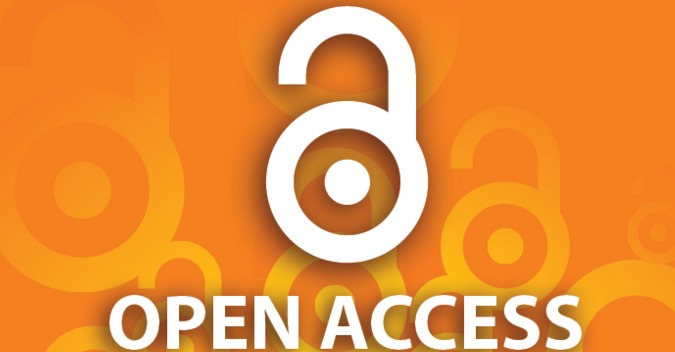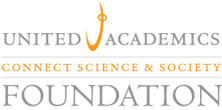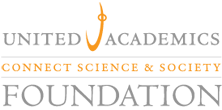
Open Access and Access to Scholary Materials in Developing Countries
Developing world scholars’ appetite for scholarly output is enormous. But pay-wall has been a barrier which effectively kept developing world scholars from touching scholarly materials for years; or at best severely limited their access to those materials. Now, the pay-walls look crumbling under ever increasing weight of open access publishing. Open access and new communication technologies, working in collaboaration, are gradually bringing the wall down.
As one of success stories recently achieved, scholarly books made freely accessible by Open Book Publishers (founded in 2008) have attracted 150,000 readers in 2013 . This is a dramatic jump from 5,000 readers in 2009. Here, sheer increase in the numbers of readers with in short period of time by itself is amazing. What is more interesting is the geographic origin of those readers. Remarkably, there are soaring numbers of readers from developing countries such as India, Nigeria and Ethiopia. Evidently, this shows that the major factor keeping developing countries scholars from scholarly publications is pay-wall.
Incredible increase in the numbers of readers and interest for open access materials are happening despite weak or unstable internet connection in developing countries. To sail through connectivity challenges, readers of OA materials are not solely relying on computers and tablets to read/download scholarly output, nonetheless. Some readers access the content of open access books/articles using their mobile phones. Significant numbers of readers in Nigeria and Ethiopia are using their phones as reading devices.

Open access (OA) movement has been growing and gathering momentum. The rate of growth and high profile support it is enjoying from those in academic arena is showing no sign of slowing down; at least in forseeable future. Radboud University president Prof. Gerard Meijer is one of those who are strongly advocating for open access. He showed his stern commitment to OA by dedicating his recent speech to OA on the university’s 91st anniversary. Besides scholars, some publishers are gradually embracing open access and joining the movement. Some do support OA because they do believe in the philosophy of OA. Others join the movement simply because they see OA is the inevitable future of publishing research output which cannot be ignored. For scholars and academic institutions the driving motive behind throwing their support behind OA largely stems from the very philosophy which defines OA: open exchange of knowledge leads to scientific and social development. Prof. Gerard Meijer believes that open access allows doctors to have new insights and companies use new knowledge that enables them innovate. Open access has similar impact on other sectors too.
Though OA is endorsed by many and its benefits are overwhelming, several publishers are still keeping scientific articles behind pay-wall. Those who can afford to pay subscription fee can get access and other denied access. However, ever increasing cost of journal subscription, according to the president, has forced several prominent academic institutions to cancel their subscription. Publishers in the industry, the status quo is primarily serving their interest, have remained reluctant to embrace open access, nevertheless.
Prof. Meijer suggests that OA can be achieved through different approaches. One way is through building OA institutional repositories; Radboud University is exactly doing that. Currently 23% of the university’s researches output published since 2004 are archived in the university’s repository. The other channel is through Gold open access approach. Currently Radboud University spends more than 5 million on journal subscription on annual basis. For Radboud University covering article processing cost is not only an initiative to support Gold OA but also it’s a measure to save on subscription budget, according to the president.It’s financially sound to cover articles processing fees than subscribing to costly journals, he finds.
According to the president the publishers are undoubtedly happy with the status quo. Academic institutions and others who subscribe to scholarly journals are not so pleased. Prof Meijer is convinced that there is a need to find middle ground and a sustainable model which works for all stakeholders.

Learned societies are traditional publishers who have been dominant players in the field of academic journal publishing and distribution. The role and the level of influence they held in the field have been changing, and it’s changing due to open access (OA) model of scientific research output publishing. This new model, beyond challenging the monopoly that the learned societies had over scholarly materials for centuries, is shaking their very foundation through posing serious threat to their income, EDP survey report shows . According to this report, open access has the potential to dry learned societies’ main source of revenue which is predominantly journal subscription fees.
With emergence of OA, learned societies learned that their business model is increasingly under pressure and not sustainable at all. They have genuine concern, the survey shows, about serious existential threat OA poses particularly to publishers with limited resources. It appears from the survey that there is sort of consensus among learned societies that open access puts their journals’ financial health in jeopardy. It is not surprising to uncover that significant numbers of learned societies are strongly negative about open access.Obviously, the philosophy of OA is fundamentally in sharp contrast to the learned societies modes of publishing and their principles of access provision to scientific outputs.
Overwhelming majority of the societies, nonetheless, recognize the opportunity OA brings about. They realize that OA opens knowledge and information gates for scientific communities and wider society; particularly for those in developing countries who in the past had no or limited access to scholarly materials due to high journal subscription fees. Now open access is helping and it is narrowing information and knowledge gap between developed and developing nations. It is effectively removing barriers to scholarly materials and by doing so it is empowering and creating opportunities for resource starved institutions and researchers to actively engage in research.
Learned societies are hesitantly embracing OA by offering open access of different flavors. Currently, Gold OA is by far the most preferred method. Hybrid method is offered by over three-quarters of the societies, however.

OpenCon2014 to be Held in Washington,DC.
OpenCon 2014 which aims to bring students and early career researchers from across the world together will be held from November 15 to November 17 in Washington, DC. The conference is organized by organizations which represent the next generation of scholars and researchers. Participants of the forum, mostly students and early career researchers, will learn more about various issues pertinent to open access and develop critical skills. Once the participants return to their home countries, they will be expected to be agents of change and catalyze actions towards opening up scholarly outputs and other educational materials.
Nick Shockey, founding Director of the Right to Research Coalition, underlines the significance of OpenCon 2014 saying “OpenCon2014 will support and accelerate this rapidly growing movement of students and early career researchers advocating for openness in research literature, education, and data.”
OpenCon 2014 is primarily organized by the Rights to Research Coalition, the Scholarly Publishing and Academic Resources Coalition (SPARC), and a committee of student and early career research organizations from around the world. OpenCon 2014 is the first event of its kind, says the announcemnet. See the Right to Research Coalition

The Scholarly Publishing and Academic Resources Coalition (SPARC) announced that 2014 International Open Access Week will be celebrated under ‘Generation Open’ theme. This year open access week will be held from October 20-26 all over the world. The theme of the week is meant to highlight central role students and junior researchers play as change agents for the development of open access scientific publishing and scholarly output dissemination. International Open Access Week 2014 aims at improving the level of awareness about the potential benefits of open access. It reflects on the success achieved. The week will also be used to help “inspire wider participation” in order to make Open Access a new norm in scholarship and research.
International Open Access Week which evolved from National Day of Action for Open Access, initiated by students in 2007, has grown and expanded dramatically. Now it participate more than 7 million students in more than 100 countries actively advocating for and supporting open access movements.
According to SPARC it is incumbent on open access advocates around the world ‘to use the week as a catalyst for raising awareness of Open Access and to build a dialogue with the next generation about shaping the system of scholarly communication that they will inherit.’ See SPARC press release.

